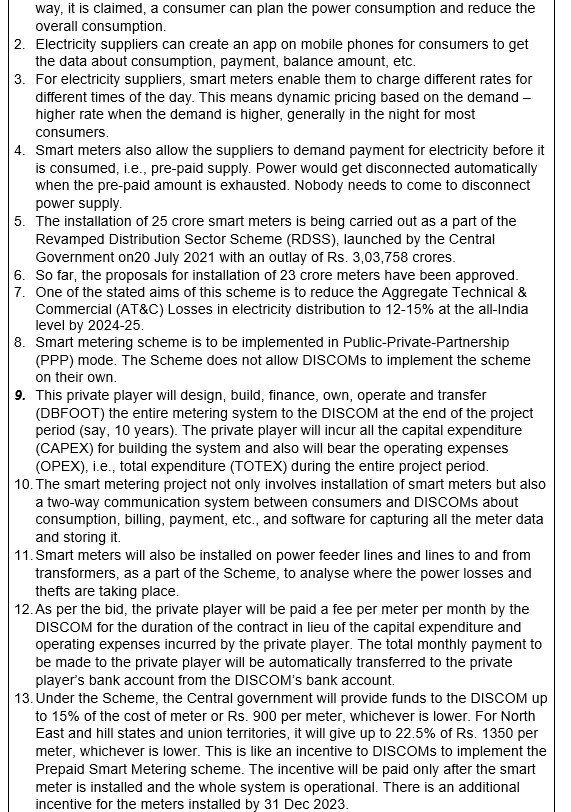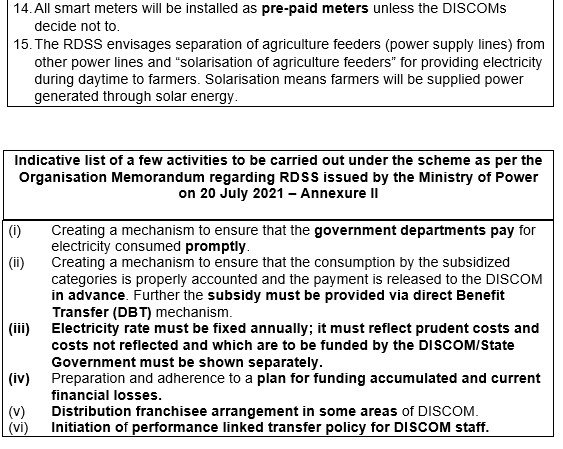By Kamgar Ekta Committee (KEC) team of volunteers

The announcement of the Prepaid Smart Electricity Meters project has generated a lot of curiosity and debate among the workers in this sector. While some of them think it will benefit them as well as the consumers, as the government claims, several unions and other workers are opposing this scheme.
In an attempt to sort out the confusion, a team of KEC volunteers took up a study to understand the details of the project as well as the claims and counter-claims. What are its stated objectives? Are the real objectives different, and if so what are they? Who will benefit from the project and who will lose? What will its impact on workers, consumers and on distribution companies be? Who will fund the smart meters and how and from whom the cost will be recovered?
We will present our conclusions up front here and explain our reasoning in detail in a number of parts for the benefit of workers and consumers.
Our conclusions:
- The Smart Meter Project has been launched to satisfy the demands of big corporates.
- It is a step to further privatise the most profitable parts of the electricity sector.
- This project is in tune with the policy of globalisation through privatisation and liberalisation that the Congress introduced in 1991, which all central governments have implemented since then.
- As in earlier cases, the government is trying to fool the workers and consumers by claiming that smart meters will benefit them.
- In actual fact, they are planning to spend people’s money in creating infrastructure for the big corporates to use and make super profits from.
- Instead of benefitting from the project, both workers and consumers will suffer in a number of ways and that is why it is necessary to unite and oppose it!
Part 1 will present the background of the project, the demands of the corporates and how the project will satisfy them. Facts about the project are presented in a separate box.
Part 2 will explain why it is disastrous for people at large, the consumers.
Part 3 will explain the harm to the workers.
Background of the Prepaid Smart Electricity Meters Project
The anti-people privatisation program of the power sector began in the 1990s in the sphere of power generation. By now more than half of power generation is carried out by big private corporates like Tata, Adani, Jindal, Torrent and others and their share of generation is steadily growing. The renewable energy generation – solar, wind, etc. – is completely in the hands of private monopolies. Long-term power purchase agreements were signed by the authorities with various private companies, Indian and foreign. This led to huge private profits for the monopoly capitalists who invested in power generation.
Following the privatisation of electricity generation, various state governments have attempted to privatise power distribution. Private power distribution companies operate in some cities like Mumbai and Delhi. But the attempts of many states and union territories like Jammu & Kashmir, Uttarakhand, Puducherry, Uttar Pradesh, and Chandigarh in this regard have been blocked by the militant struggles of the workers.
The demands of the corporates today
The private power monopolies now want to own and control the complete power supply chain – generation, transmission and distribution.
The private power monopolies have been asking the government to address various problems affecting the finances of the Discoms (state-owned distribution companies) to make them lucrative for their large-scale privatisation. The main problems to be addressed are:
Money for power supplied, whether at standard rate or subsidised rate, is fully and promptly recovered and given to generation companies. In other words,
- Create a system so that there are no over-due bill payments from individual, commercial, industrial, agricultural and government customers.
- Discontinue all subsidies on electricity. Any subsidy given to a group of consumers should be through Direct Benefit Transfer (DBT) system. This means every consumer must first pay the full price of electricity before use.
- Minimise losses in the distribution system, including theft, so that cost of most of the power supplied is realised.
- Upgrade the distribution infrastructure with public money so that they (corporates) do not have to invest capital to renew it.
The response of the Government
We will show how the Smart Electricity Meter Project addresses these demands.
The Central Government has decided to install 25 crore pre-paid smart electricity meters all over the country by 2025. It means that in the next few years existing meters will be replaced with these new meters in the next few years for most consumers, other than agricultural. The installation of 25 crore smart meters is being carried out as a part of the Revamped Distribution Sector Scheme (RDSS), launched by the Central Government on20 July 2021 with an outlay of Rs. 3,03,758 crores.
The prepaid smart metering scheme along with the other components of the RDSS addresses all the demands of the corporates. This will make the electricity distribution business profitable unlike what it is today. It will also address the difficulty faced by generating companies (Gencos) due to delay in payment by Discoms for power purchased by them.
By making the meters pre-paid, the electricity supplier is assured that only that much electricity is supplied for which money has been paid in advance. Power supply can be stopped remotely, without the need of a person coming to physically disconnect it.
The distribution infrastructure will get modernised and losses minimised. Besides the smart metering scheme, the RDSS has another component to achieve these objectives. It relates to distribution infrastructure upgradation to reduce losses and modernise it.
The Central government will provide 60% of funds for infrastructure upgradation projects but for that the DISCOM will be required to prepare a time-bound detailed Action Plan for strengthening its Distribution system and to improve its performance. Funds will be provided when pre-qualifying criteria are satisfied and steps have been taken as per the loss reduction plan (See Box). Thus, public money would be used to upgrade distribution infrastructure that will be used by private companies.
It is clear that the real objective of the prepaid smart metering scheme and other components of the Revamped Distribution Sector Scheme (RDSS) is to make electricity distribution attractive for privatisation. The fact that the government is insisting on the PPP mode for installation of smart meters makes the real aim even more evident.
Consumers and power sector workers cannot afford to get fooled by claims of Central and state governments. The smart meter scheme is nothing but a ‘smart’ step towards privatisation of electricity distribution.
The installation of smart meters is now being undertaken to pave the way for privatisation of the most lucrative operations of the Discoms.



